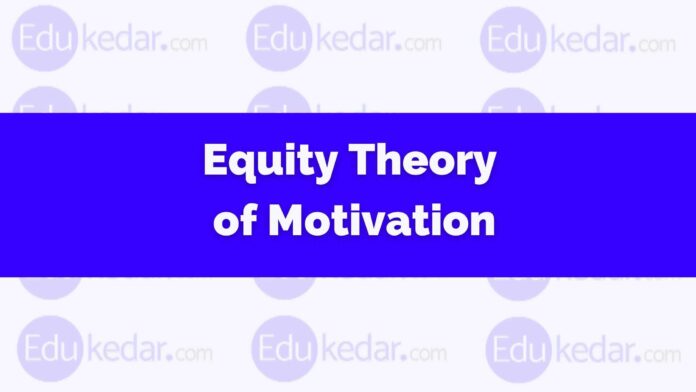Theory of motivation help in finding the factors and situation that affect the motivation of employees. It assists the manager to find the best reward for the individual that they need. In this article, we will discuss one of the motivation theories that is Adam,s equity theory of motivation.
► What is the Equity Theory of Motivation?
The equity theory of motivation was given by John Stacey Adams in 1963.
Equity theory is a process theory of motivation. It is also known as social comparison theory and inequality theory.
According to this theory, employees feel highly motivated in the workplace when each employee is treated relatively fairly and equally like others. When an employee works for an organization he or she provides service in exchange for monetary and nonmonetary benefits.
Important terms in equity theory of motivation –
- Person – A individual who wants of finding an inequity and an equality
- Comparison with others – Any group or individual used as a reference to compare inputs and outputs
- Inputs – the things that an individual bring in a job with them, such as – age, job efforts, experience, knowledge, Technical skill, communication skill, interpersonal skill, training and etc.
- Outcomes – the things that an individual receive, such as – salary, performance, fringe benefits, job security, status symbols, responsibility, recognition, challenging job assignment, etc.
Also Read : Theory X and Theroy Y of Motivation
While comparing her Inputs and outcomes with coworker inputs and outcomes, employees find three kinds of relationship
- Equality
- Negative inequity
- Positive inequity
✔ An equitable situation
Here employees feel satisfied that the ratio of their outcome and input is equal to their coworker’s outcome and input ratio and they try to continue generating the same level of outcome.
✔ A negative inequality
Here employee feels dissatisfied because their outcome and input ratio is greater than the coworker outcome and input ratio and they try to reduce their input or leave the organization.
✔ A positive inequality
Here employee feels that he needs to do hard work or improve his performance because his ratio of outcome and input is lower than others.
Equity theory proposes that motivation in an individual is developed only after the person compares his inputs and outcome ratio with another person’s inputs and outcomes ratio.
After comparing individuals perceive equity and inequity. Inequity is a situation in which a person’s job inputs/output ratio is not equal to the inputs/outputs ratio of another.
If an employee thinks that he or she is paid less than his or her co-worker then as per this model he feels dissatisfied and reduces this job input or changes the organization.
► Example of equity theory of motivation.
Both employees have the same responsibility, quality, and quantity of work but their outcomes are different
| Employee A | Employee B |
| Who is checking the equity | Who is comparing |
| Spend 8 hr and get Rs 400 | Spend 8 hr and get Rs 500 |
So, employee A gets Rs 50 per hour, and employee B get Rs 62.50 per hour
now employee A feels dissatisfied and he tries to lower its input.





